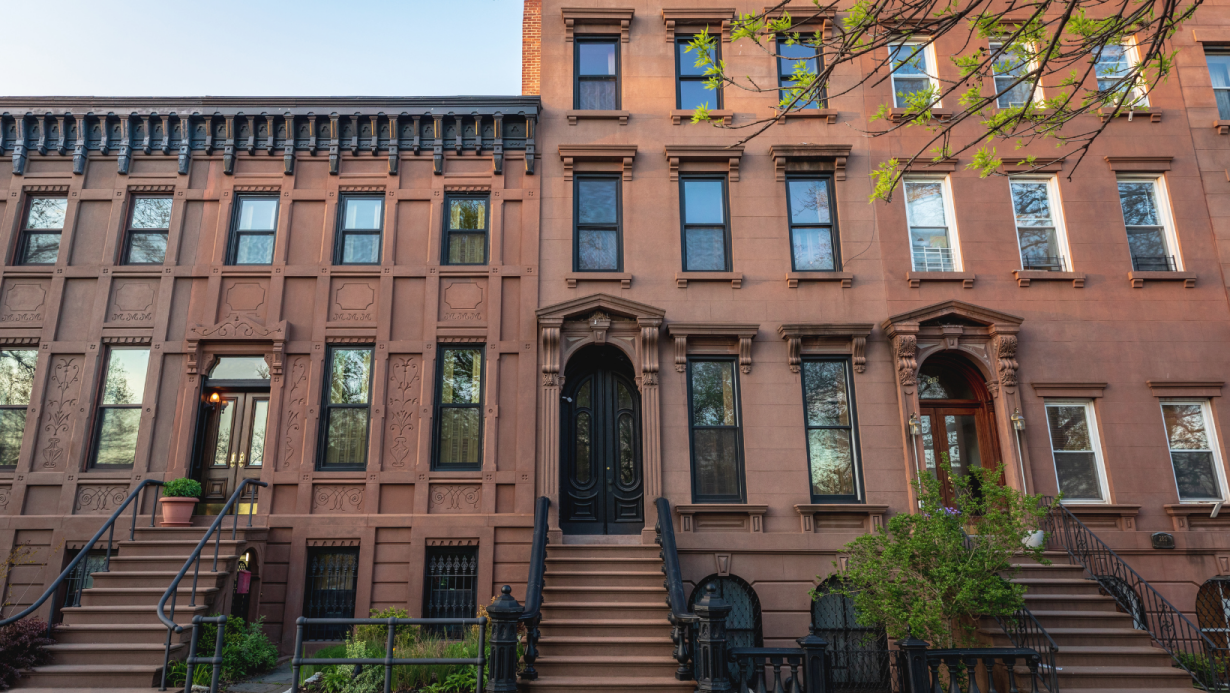One way that is becoming popular to increase energy efficiency and increase the air quality in your home is to adopt the principles of Passive Housing. Simply put, a passive house is one in which is built air tight and insulated to the highest standards.
When these standards are applied to a typical New York CIty Brownstone, they can increase the energy efficiency which will reduce the total energy consumption by 75%.
There are several components to a passive house, and if you are renovating, will add about 10% to the total cost of the project, which can easily be made up in future utility bill savings. If you are renovating a Brownstone, consider adding some or all of these features.
Airtightness
Making the building airtight will drastically reduce the amount of energy needed for heating and cooling. Weather stripping the doors, sealing any cracks in exterior walls and sealing and caulking any areas where plumbing, electric or any other utilities enter the building are completed with extra attention to detail.
Many times the construction company will perform an onsite pressure test to guarantee the building has been properly sealed.
Super-Insulation
Extensive insulation is relatively cheap and extremely effective at lowering heating and cooling costs. Extra attention is paid to applying adequate insulation to all walls, floors and roofs of the building. This is one of the most cost effective ways to lower the future energy footprint of any building.
High-Performance Windows
Replacing the windows with high performance triple pane windows also makes the unit far more energy efficient. Most older windows have an R value of around 3, where the newer triple pane windows have an R value of around 11, where R value is the mathematical measurement of how well a window insulates from the outside temperature. This is an extra expense, but again will easily pay for itself with lower heating and cooling costs in the future.
Heat Recovery Ventilation
All the extra attention paid to air tightness can make the inside of the building uncomfortable due to stale air. To combat this, these units have a special Heat Recovery Ventilation system added. Fresh air is drawn in from the outside, but in colder months, it can be preheated by the exhaust exiting the building from the furnace. This gives the inside a pleasant feeling of fresh air without adding to the fuel expenditure.
Thermal Bridge-Free Detailing
A thermal bridge is any poorly insulated material that easily allows heat to escape or enter from the exterior walls. On a typical brownstone, often a layer of insulation is added between interior drywall and exterior wood or stone framing.
All of these fine details can be labor intensive and add a little extra costs, but will add many years of lower utility bills, a more pleasant living experience and a smaller carbon footprint for the planet. Definitely consult with your builder about adding some or all of these key features to your next renovation.
Schedule a call with me here if you have any interest in obtaining a complimentary valuation for your home or buyer consultation.
Connect with me on Linkedin or Instagram for more information on the townhouse and multifamily market.
Authored by: Stanley Montfort
To see townhouse inventory, click here.




